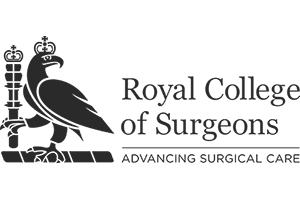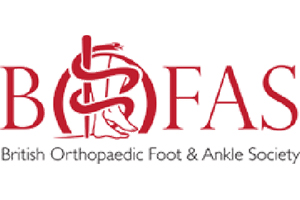Cheilectomy is an operation to remove a bony lump on the top of the main joint of the big toe. This is almost always caused by arthritis of the great toe (sometimes known as “hallux rigidus”)
Why would it be done?
This operation is done either because the bony lump is pressing painfully on your shoes, or as a treatment for early arthritis of the big toe, when the joint is not yet badly affected. Some people have both reasons for surgery.
If the lump is pressing on your shoes, you will probably have tried different shoes before coming to see the surgeon, and there is usually no other option than surgery. However, if arthritis is the main problem, surgery would only be advised if other treatments, such as painkilling and anti-inflammatory medicines, modifications to your shoes and injections had not helped.
What does the operation involve?
A cut is made on the side of the big toe. The lump is removed and the joint flushed out. The joint is then checked to see how bad your arthritis is. The joint is then stitched up and dressings are applied.
Some people will have been advised before surgery that if the arthritis is worse than it appears on X-ray another operation will be done – your surgeon will discuss this with you before the operation.
Can it be done as a day case operation?
If you are medically fit, have someone who can collect you and look after you after the operation, and you are comfortable afterwards, the operation can be done on a day case basis.
However, if you have other medical problems such as diabetes, asthma or high blood pressure, you may have to be admitted the day before for tests and stay overnight after surgery. If you cannot be collected and looked after you must stay overnight to avoid complications.
The commonest reason for having to stay overnight after a cheilectomy is for pain control, as the operation involves cutting out a piece of bone. Local anaesthetic injections can help with this, but not everyone is comfortable to go home.
The majority of people who have a cheilectomy are able to go home the same day.
Will I have to go to sleep (general anaesthetic)?
The operation can be done under general anaesthetic (asleep). Alternatively, an injection in the back, leg or around the ankle can be done to make the foot numb while the patient remains awake. Local anaesthetic injections do not always work and in that case you may have to go to sleep if the operation is to be done. Your anaesthetist will advise you about the best choice of anaesthetic for you.
In addition, local anaesthetic may be injected into your leg or foot while you are asleep to reduce the pain after the operation even if you go to sleep for the surgery. You will also be given pain-killing tablets as required.
Will I have a plaster on afterwards?
No, you will not have a plaster on, just a firm bandage.
What happens afterwards?
You will come back to the clinic 2 weeks after surgery for a check on your wound, removal of sutures and to advice you on exercises. You should then start to stretch your big toe up and down gently. This may hurt a bit, but it is important to get your toe moving early so it does not stiffen up. Obviously, we do not expect you to do this very vigorously at first, but as the toe heals you should work harder and harder at it.
Usually you will be seen again about 6-8 weeks after your operation and if you are making good progress then you need not come back.
If the operation was done for the bony lump alone, it will almost never grow back.
If the operation was done for arthritis, you will probably notice an improvement in the arthritic pain within a month.
How soon can I….
Walk on the foot?
You can do so immediately, but for the first 14 days you should avoid walking if possible and put all of your weight on the heel. When not walking you must rest with you foot elevated as much as possible to reduce swelling. When your stitches have been removed you can be more mobile.
Go back to work?
This depends on what you do and how you get to work. If you have a sitting-down job that you could do with your foot up most of the time, and you can get to work, you could probably go back to work 2 weeks after surgery. On the other hand, if you have a heavy manual job you may be off for up to 3 months. If you need to drive to work, this will affect when you can go back. Your surgeon will advise you about going back to work.
Drive?
You can drive as soon as your foot is comfortable enough and you can wear a suitable shoe. Usually this is 2-4 weeks after surgery. You must be comfortable and not too stiff before trying to drive. Start by sitting in the car and trying the pedals then drive round the block. Drive short distances before long ones. Remember, if you cannot safely make an emergency stop your insurance will not cover you in the event of an accident. Ask your surgeon when it is safe for you to drive again.
Play sport?
As the swelling in your foot goes down and it becomes less stiff, you can start gently exercising your foot and walking further each day. When you are comfortable doing this you can start gentle running and stretching. Contact, twisting and impact sports can follow as comfort dictates. Everyone is different in how quickly they can take up exercise again: be guided by your own body’s reactions and the advice of your surgeon. Most people can get back to most of their previous activities within 6 months of a cheilectomy.
What can go wrong?
Some local skin infection can occur around the incision site. This is why it is important to elevate your foot as much as possible to prevent swelling which stretches the wound edges.
Occasionally, the nerves to the top of the toe are bruised or stretched in the course of the operation, causing numbness or tingling on top of the big toe. This usually settles within about 6 weeks.
The foot tends to swell up quite a lot after surgery. Swelling is part of your body’s natural response to any injury and surgery is no exception. In addition, your foot is at the bottom of your body so fluid tends to collect in its tissues (“at the bottom of the slope”) and cause swelling. People vary in how quickly this swelling disappears after an operation and 6 months is not all that unusual. Provided you are not having undue pain or inflammation there is probably nothing to worry about and you can afford to give it time.
If the surgery is done for arthritis in the joint, this may progress over the next few years and you may eventually need further treatment, including possibly another operation.





